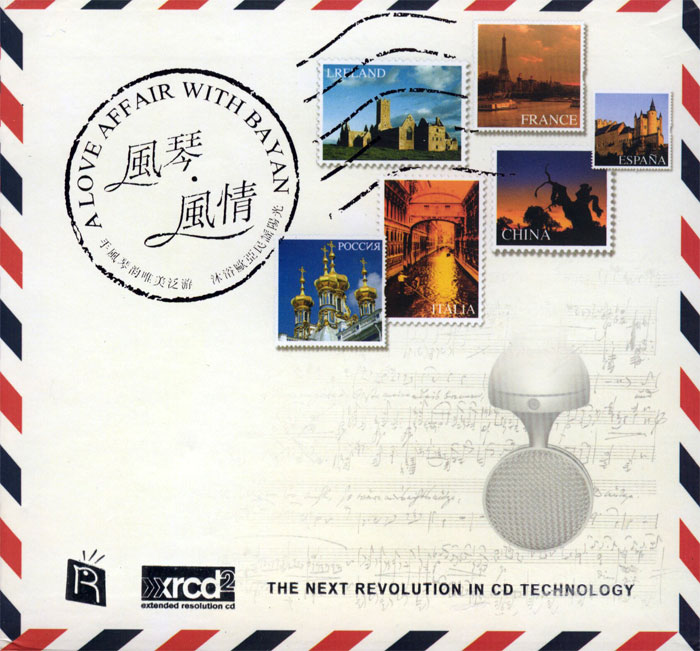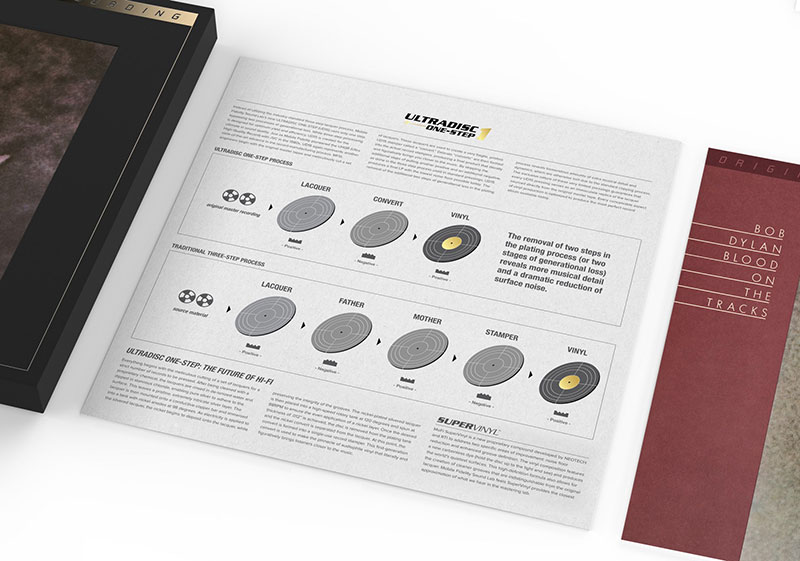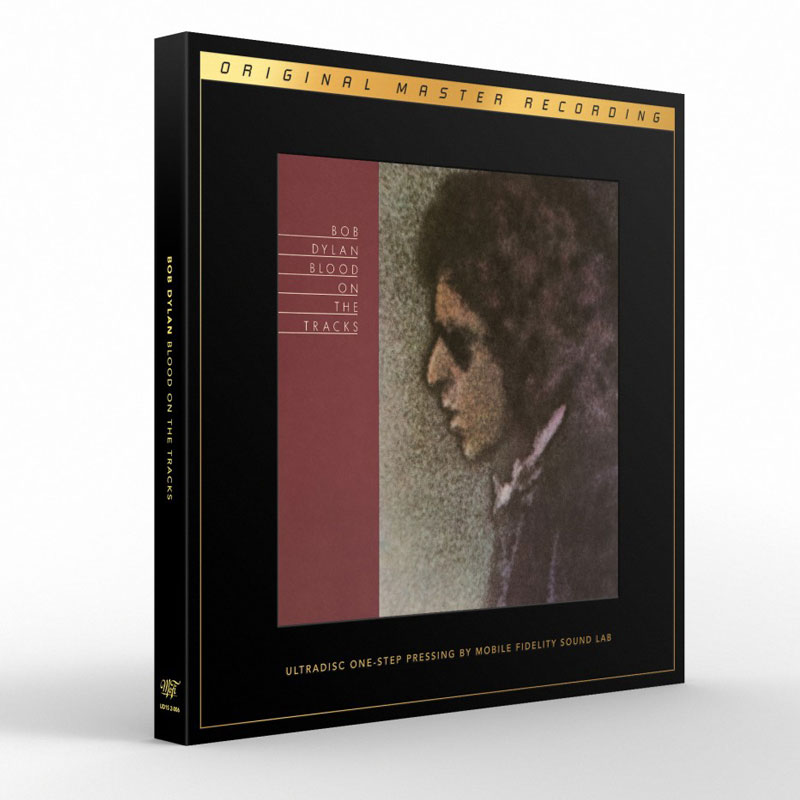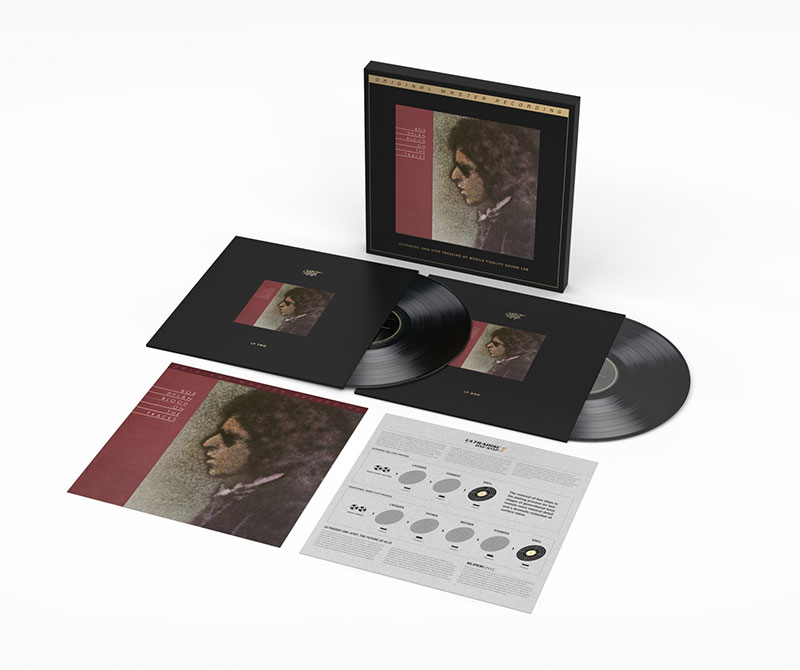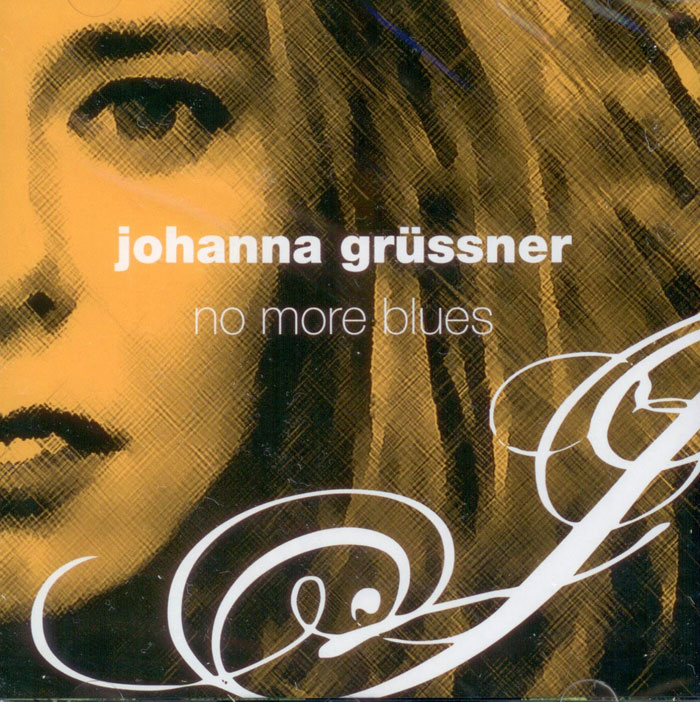Logowanie
Dlaczego wszystkjie inne nie brzmią tak jak te?
SpeakersCorner - OSTATNIE!!!!
RAVEL, DEBUSSY, Paul Paray, Detroit Symphony Orchestra
Prelude a l'Apres-midi d'un faune / Petite Suite / Valses nobles et sentimentales / Le Tombeau de Couperin
Samozapłon gwarantowany - Himalaje sztuki audiofilskiej
PROKOFIEV, Stanislaw Skrowaczewski, Minneapolis Symphony Orchestra
Romeo and Juliet
Stanisław Skrowaczewski,
✟ 22-02-2017
BARTOK, Antal Dorati, Philharmonia Hungarica
Dance Suite / Two Portraits / Two Excerpts From 'Mikrokosmos'
Samozapłon gwarantowany - Himalaje sztuki audiofilskiej
ENESCU, LISZT, Antal Dorati, The London Symphony Orchestra
Two Roumanian Rhapsodies / Hungarian Rhapsody Nos. 2 & 3
Samozapłon gwarantowany - Himalaje sztuki audiofilskiej
Winylowy niezbędnik
ClearAudio
Cartridge Alignment Gauge - uniwersalny przyrząd do ustawiania geometrii wkładki i ramienia
Jedyny na rynku, tak wszechstronny i właściwy do każdego typu gramofonu!
ClearAudio
Harmo-nicer - nie tylko mata gramofonowa
Najlepsze rozwiązania leżą tuż obok
IDEALNA MATA ANTYPOŚLIZGOWA I ANTYWIBRACYJNA.
Wzorcowe
Carmen Gomes
Celebrating the art and spirit of music - vol. 5 - Reference Songs
- CHCECIE TO WIERZCIE, CHCECIE - NIE WIERZCIE, ALE TO NIE JEST ZŁUDZENIE!!!
Petra Rosa, Eddie C.
Celebrating the art and spirit of music - vol. 3 - Pure
warm sophisticated voice...
SAMPLER - STS DIGITAL, Gregor Hamilton
Celebrating the art and spirit of music - vol. 2 - Love songs from Gregor Hamilton
...jak opanować serca bicie?...
SAMPLER - STS DIGITAL
Celebrating the art and spirit of music - vol. 1 - Leonardo Amuedo
Największy romans sopranu z głębokim basem... wiosennym
Lils Mackintosh
Celebrating the art and spirit of music - vol. 4 - A Tribute to Billie Holiday
Uczennica godna swej Mistrzyni
Bob Dylan
Blood On the Tracks

- Bob Dylan - vocals, guitar
ULTRADISC ONE STEP LP - Edycja Limitowana, numerowana
Mastered from the Original Master Tapes with Mobile Fidelity's One-Step Process: Blood On The Tracks UD1S 180g 45RPM 2LP Box Set the Ultimate Analog Version
Lavish Packaging Includes Opulent Box, Foil-Stamped Jackets, and SuperVinyl LPs: Deluxe Audiophile Pressing Strictly Limited to 9,000 Hand-Numbered Copies (Limit Two Per Customer)
Ranked #16 on Rolling Stone's 500 Greatest Albums of All Time, Includes "Tangled Up in Blue" and "Simple Twist of Fate": Dylan Pours Out Scarred Emotion, Opens His Veins, and Bleeds
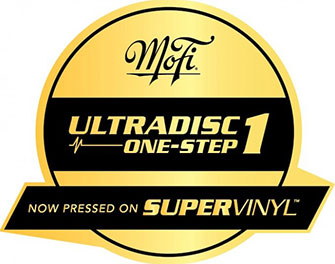 Jak wyjaśnić istotę nowego zjawiska na naszym rynku audiofilskim, prosto z Mobile Fidelity, gdzie zaczęto produkcję winyli One-Step-LP?
To proste. Oczywiście, wszystko Państwu powiem. Wiem, o co chodzi.
Dziś wytwarzanie winyli odbywa się tak, jak gdybyśmy trzymaną w lewej dłoni kromkę chleba posmarowali masłem, przyłożyli do niej trzymaną właśnie w dłoni prawej drugą kromkę w celu przeniesienia na nią masła. Ok. Mamy więc w prawej ręce pajdowy stempel, wykonany ze wzorca sznitki-matki. Teraz z tego stempla (prawa dłoń) odciskamy masło na skibkę do konsumpcji… No właśnie, podziwiam Pańską spostrzegawczość, przydałaby się jeszcze jedna ręka… I powtarzamy tę czynność razy trzy, osiemnaście, siedemdziesiąt, dwa tysiące. Tyle płyt ile chcemy mieć w danym nakładzie.
Mam nadzieję, że nie pominąłem tu żadnego etapu tworzenia glonków.
Tak właśnie produkuje się płyty LP.
Z taśmy matki robimy na ‘lakierze’ (aluminiowy talerz z twardym tworzywem zwanym często po polskiemu – lakierem) rowkową kopię nagrania muzycznego.
Ten lacquer disc pokrywamy azotanem srebra. Całość wędruje do komory galwanizacyjnej. Podążamy? Z komory wyłania się tzw. niklowy negatyw. W fachowej terminologii – ojciec-master (metal master). Jest on negatywem struktury rowków płyty winylowej. Tworzymy więc z niego metalowy pozytyw tychże rowków, określany terminem matka-master (metal mother). I dzieło stworzenia zakończone. Matka-master, na wzór biblijnej Ewy, odciska się na setkach, tysiącach winylowych kopii. Ów stamper, jak mówi się w branży o matce – jest właściwie echem wyrytego zapisu z taśmy magnetofonowej. No ale matka nieustannie się zużywa. W efekcie – każda kolejna kopia z matki jest mniej podobna do pierworodnego winylo-dziecięcia.
One-Step-LP zrywa z teorią Darwina, przeczy logice prokreacji, zadaje w jakimś sensie kłam niektórym aspektom genderowym. Bo oto ta technologia eliminuje matkę. To znaczy… ojca. OK. W miejsce obu – pojawia się On. One-Step-LP.
Nacięty ‘lakier’ zamienia się od razu w stempel do odciskania krążków dla Państwa.
Maksymalnie 500 z jednego ‘lakieru’. I znów robi się lakier, i znów 500 plus odciśnięć, które muszą być zweryfikowane, porównane z taśmą źródłową. Może się więc zdarzyć, że płyta z partii 3500-4000 będzie się brzmieniowo różniła od krążka z numerem 1000-1500.
Ponadto – masa winylowa tych One-Step-LP nie zawiera barwnika węglowego.
Szaleństwo! Ceny pierwszych wydań w tej technologii osiągają zawrotne ceny na audiofilskich giełdach.
Do reedycji wybrano najlepsze mastery. Nagrania o utwierdzonej audiofilskiej reputacji.
Czyli – prawie taśma.
Oto kolejny, wielki krok audiofilskiej społeczności, która nie zawaha się wydać każde pieniądze, byle tylko zbliżyć się do oryginału.
A przecież można byłoby po tenże oryginał sięgnąć. Na taśmie.
No, ale to nie byłby już chyba audiofilzm. Tylko czyta logika i pragmatyka,
A ta nikogo nie ekscytuje.
Jak wyjaśnić istotę nowego zjawiska na naszym rynku audiofilskim, prosto z Mobile Fidelity, gdzie zaczęto produkcję winyli One-Step-LP?
To proste. Oczywiście, wszystko Państwu powiem. Wiem, o co chodzi.
Dziś wytwarzanie winyli odbywa się tak, jak gdybyśmy trzymaną w lewej dłoni kromkę chleba posmarowali masłem, przyłożyli do niej trzymaną właśnie w dłoni prawej drugą kromkę w celu przeniesienia na nią masła. Ok. Mamy więc w prawej ręce pajdowy stempel, wykonany ze wzorca sznitki-matki. Teraz z tego stempla (prawa dłoń) odciskamy masło na skibkę do konsumpcji… No właśnie, podziwiam Pańską spostrzegawczość, przydałaby się jeszcze jedna ręka… I powtarzamy tę czynność razy trzy, osiemnaście, siedemdziesiąt, dwa tysiące. Tyle płyt ile chcemy mieć w danym nakładzie.
Mam nadzieję, że nie pominąłem tu żadnego etapu tworzenia glonków.
Tak właśnie produkuje się płyty LP.
Z taśmy matki robimy na ‘lakierze’ (aluminiowy talerz z twardym tworzywem zwanym często po polskiemu – lakierem) rowkową kopię nagrania muzycznego.
Ten lacquer disc pokrywamy azotanem srebra. Całość wędruje do komory galwanizacyjnej. Podążamy? Z komory wyłania się tzw. niklowy negatyw. W fachowej terminologii – ojciec-master (metal master). Jest on negatywem struktury rowków płyty winylowej. Tworzymy więc z niego metalowy pozytyw tychże rowków, określany terminem matka-master (metal mother). I dzieło stworzenia zakończone. Matka-master, na wzór biblijnej Ewy, odciska się na setkach, tysiącach winylowych kopii. Ów stamper, jak mówi się w branży o matce – jest właściwie echem wyrytego zapisu z taśmy magnetofonowej. No ale matka nieustannie się zużywa. W efekcie – każda kolejna kopia z matki jest mniej podobna do pierworodnego winylo-dziecięcia.
One-Step-LP zrywa z teorią Darwina, przeczy logice prokreacji, zadaje w jakimś sensie kłam niektórym aspektom genderowym. Bo oto ta technologia eliminuje matkę. To znaczy… ojca. OK. W miejsce obu – pojawia się On. One-Step-LP.
Nacięty ‘lakier’ zamienia się od razu w stempel do odciskania krążków dla Państwa.
Maksymalnie 500 z jednego ‘lakieru’. I znów robi się lakier, i znów 500 plus odciśnięć, które muszą być zweryfikowane, porównane z taśmą źródłową. Może się więc zdarzyć, że płyta z partii 3500-4000 będzie się brzmieniowo różniła od krążka z numerem 1000-1500.
Ponadto – masa winylowa tych One-Step-LP nie zawiera barwnika węglowego.
Szaleństwo! Ceny pierwszych wydań w tej technologii osiągają zawrotne ceny na audiofilskich giełdach.
Do reedycji wybrano najlepsze mastery. Nagrania o utwierdzonej audiofilskiej reputacji.
Czyli – prawie taśma.
Oto kolejny, wielki krok audiofilskiej społeczności, która nie zawaha się wydać każde pieniądze, byle tylko zbliżyć się do oryginału.
A przecież można byłoby po tenże oryginał sięgnąć. Na taśmie.
No, ale to nie byłby już chyba audiofilzm. Tylko czyta logika i pragmatyka,
A ta nikogo nie ekscytuje.
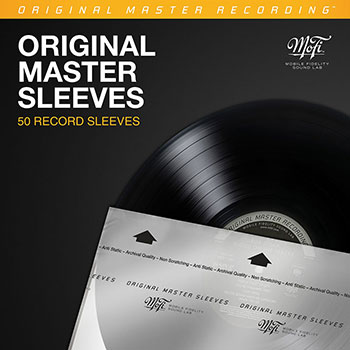 >>> Płyty winylowe należy przechowywać WYŁĄCZNIE w NAJLEPSZYCH NA ŚWIECIE koszulkach produkcji legendarnej wytwórni MOBILE FIDELITY.
100% gwarancji na pozbycie się trzasków będących w istocie w 90% efektem ładunków elektrostatycznych a nie uszkodzeń mechanicznych płyty! <<<
>>> Płyty winylowe należy przechowywać WYŁĄCZNIE w NAJLEPSZYCH NA ŚWIECIE koszulkach produkcji legendarnej wytwórni MOBILE FIDELITY.
100% gwarancji na pozbycie się trzasków będących w istocie w 90% efektem ładunków elektrostatycznych a nie uszkodzeń mechanicznych płyty! <<<
 >>> Ten zestaw to podstawa każdego toru winylowego! <<<
>>> Ten zestaw to podstawa każdego toru winylowego! <<<
Bob Dylan was at several crossroads in the mid 1970s. Artistically, he was largely written off as being past his prime. Emotionally, he was suffering through a painful divorce from his then-wife Sara Lowndes. Creatively, he appeared at a stalemate, his previous decade's unprecedented run of transformational brilliance finished. Then came Blood on the Tracks. A start-to-finish cycle that documents a lover's pursuit of, entanglement with, and loss of a woman, the bracingly intimate 1975 effort remains one of the most encompassing break-up albums ever made and ranks as the most personal statement of the Bard's career.
Presenting the record's acoustic and band-supported songs with the utmost transparency, dynamics, presence, immediacy, spaciousness, and imaging, Mobile Fidelity's opulent UD1S (UltraDisc One-Step) box set makes Blood on the Tracks reach three-dimensional sonic and emotional heights never before attained. Strictly limited to 9,000 numbered copies and pressed at RTI on SuperVinyl, this ultra-hi-fi collector's edition shines a high-powered light on the fluid vocal phrasing, timbral shifts, functional rhythms, and inward-looking strumming crucial to the album's aura. You'll enjoy deep-black backgrounds, boundless soundstaging, pointillist details, staggering dynamics, and arguably, the most lifelike tonalities and nuances ever committed to vinyl. Every note, breath, and movement is reproduced with exquisite accuracy, wowing clarity, and impeccable balance.
The lavish packaging and beautiful presentation of Mobile Fidelity's Blood on the Tracks UD1S pressing befit its extremely select status. Housed in a deluxe box, the collectible version contains special foil-stamped jackets and faithful-to-the-original graphics that illuminate the splendor of the recording. Aurally and visually, it exists a curatorial artifact meant to be preserved, poured over, touched, and examined. It is made for discerning listeners that prize sound quality and creativity, and who desire to fully immerse themselves in the art – and everything involved with the album, from the images to the textures and liner notes.
Ranked 16 on Rolling Stone's list of the 500 Greatest Albums of All Time, and replete with existential thought, piercing directness, raw singing, and majestic arrangements, Blood on the Tracks remains a soul-exposing confessional. To hear it is to experience the agony, frustration, trauma, highs, lows, confusion, sadness, and, ultimately, requisite redemption associated with intimate relationships gone astray. Dylan maintains it's a work of fiction, but the evident close-vested autobiographical premise is what helps make it universal: It's the icon singing through tears, going out of his mind, battling hallowing emptiness, firing shots across the bow, and accepting culpability. Blood on the Tracks serves, in short, as a consummate expression of love's darker sides and the consequences of what happens when dreams unravel.
For all the melancholic pain, unresolved questions, shattered memories, wasted times, unrequited dialogs, and weary regret within, Blood on the Tracks remains as daring as it is reflective. Rather than follow for a monotone caustic vibe, Dylan's songs burrow into the subconscious for the manners in which they are even-keeled, mellow, and occasionally, even peaceful. Dignity, honor, poignancy, and fairness – all traits uncommon in any situation in which partners dissolve histories, change hearts, and attribute blame – instill the record with equilibrium on par with the consistency of the flowing melodies.
Throughout, tunes come on and proceed as if they could continue forever, Dylan spinning poetic verses and conversations amidst finely tied knots of acoustic notes, chords, and fills, the deceivingly simple architecture conjuring the intertwined refractions of a bezeled jewel, various angles, colors, and textures conjoining into a gorgeously inseparable whole. Backed by Tony Brown's flexible albeit subtle bass, Buddy Cage's country-streaked pedal-steel guitar, and Paul Griffin's soul-baring organ – an instrument used to shadow, tuckpoint, and illuminate here as effectively as any time in rock history – Dylan pours out scarred emotion, open his veins, and bleeds.
More About Mobile Fidelity UltraDisc One-Step and Why It Is Superior:
Instead of utilizing the industry-standard three-step lacquer process, Mobile Fidelity Sound Lab's new UltraDisc One-Step (UD1S) uses only one step, bypassing two processes of generational loss. While three-step processing is designed for optimum yield and efficiency, UD1S is created for the ultimate in sound quality. Just as Mobile Fidelity pioneered the UHQR (Ultra High-Quality Record) with JVC in the 1980s, UD1S again represents another state-of-the-art advance in the record-manufacturing process. MFSL engineers begin with the original master tapes and meticulously cut a set of lacquers. These lacquers are used to create a very fragile, pristine UD1S stamper called a "convert." Delicate "converts" are then formed into the actual record stampers, producing a final product that literally and figuratively brings you closer to the music. By skipping the additional steps of pulling another positive and an additional negative, as done in the three-step process used in standard pressings, UD1S produces a final LP with the lowest noise floor possible today. The removal of the additional two steps of generational loss in the plating process reveals tremendous amounts of extra musical detail and dynamics, which are otherwise lost due to the standard copying process. The exclusive nature of these very limited pressings guarantees that every UD1S pressing serves as an immaculate replica of the lacquer sourced directly from the original master tape. Every conceivable aspect of vinyl production is optimized to produce the most perfect record album available today.
MoFi SuperVinyl: The World's Quietest Surfaces and Cleanest Grooves:
Developed by NEOTECH and RTI, MoFi SuperVinyl is the most exacting-to-specification vinyl compound ever created. Analog lovers have never seen (or heard) anything like it. Extraordinarily expensive and extremely painstaking to produce, the special proprietary compound addresses two specific areas of improvement: noise floor reduction and enhanced groove definition. The vinyl composition features a new carbonless dye (hold the disc up to the light and see) and produces the world’s quietest surfaces. This high-definition formula also allows for the creation of cleaner grooves that are indistinguishable from the original lacquer. MoFi SuperVinyl provides the closest approximation of what the label’s engineers hear in the mastering lab.





